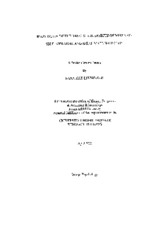| dc.description.abstract | Previous research indicates that while media images of women and men are becoming more thin and muscular (respectively), the size and weight of American people is increasing. Several researchers have found that media images of ideal body types are highly related to body dissatisfaction and negative self-evaluation. Although some researchers have found that interventions regarding media images (i.e. education about the unrealistic nature of these images) negate the effect of media images on body dissatisfaction, most researchers have found no effect. The purpose of this study is to determine the effects of printed media images and interventions on participants' perceived body image, ideal body image, ideal body shape for the opposite sex, and current mood state. Five hundred and twelve undergraduates (males n=249, females n=263) viewed a slideshow containing either ideal, average, or overweight male and female images. After the slideshow, half of the participants (n=258) received an intervention, which consisted of a handout explaining techniques commonly used by the media to enhance the appearance of models (e.g., airbrushing, image splicing, and resizing). Measures of body dissatisfaction, perceived body image, ideal body image, ideal body shape of the opposite sex, depression, anger, anxiety, and vigor will be compared from pre-test to post-test using Analysis of Variance, in order to determine the effects of the images and intervention on the dependent variables. Because of the lack of an effect of the manipulation, there was limited ability to test the effectiveness of the intervention. Future research similar to the current study should not present participants with both male and female images. To prevent possible confounds, participants should view either ideal, average, or overweight men or women. | en |


